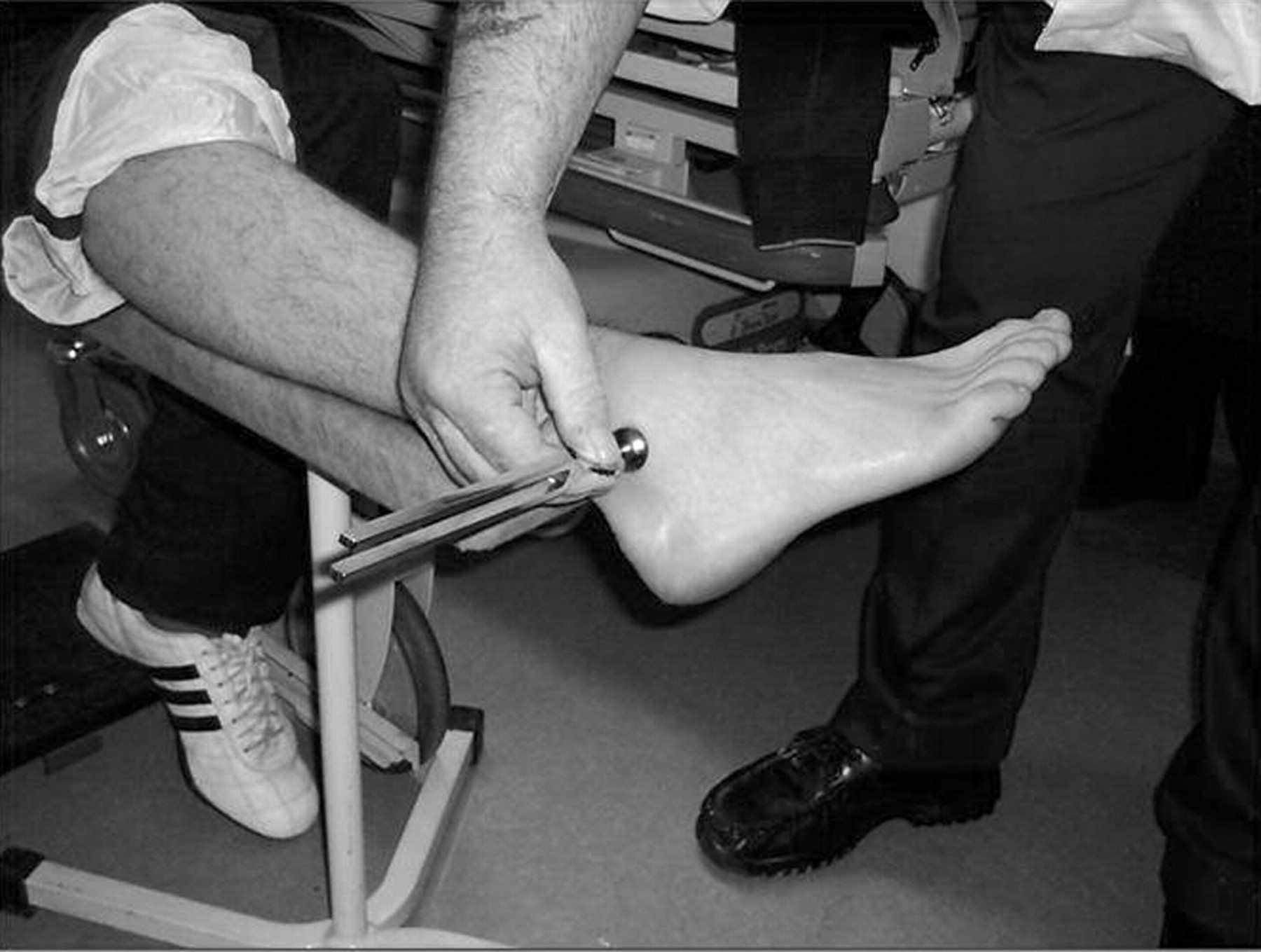

The pressure of application for several gold standard vibration sources, such as the neurothesiometer and Rydel Seiffer tuning fork, is “gravity”, an impractical requirement for assessment of loss of sensation over most of the foot and leg as, in a sitting or lying position, very few surfaces are truly horizontal. Loss of vibration sense has long been established as one of the earliest, and therefore one of the most important, signs of nerve damage not only in diabetes, but in other causes of peripheral neuropathy (Williamson, 1907). By providing instant feedback, the manikin toe serves as a useful training device to encourage consistency of vibration sense testing. With both devices, however, there was considerable intra-operator variability in recorded amplitude and frequency of vibration. Despite differences in technique, the waveform generated with VibraTip was more consistent than that of the tuning fork. Using the manikin, the consistency of vibration applied by a group of doctors using a standard 128-Hz tuning fork, with that delivered by the same operator using VibraTip ® (McCallan Medical), were compared. The authors developed a toe manikin capable of reporting the waveform and intensity of vibration imparted to its surface. A standard tuning fork remains the most widely used tool for assessing vibration perception in clinical practice, however inter-operator differences in the use of this tool vary widely. The foot health check provides a comprehensive examination of your feet, and is ideal for regular monitoring of foot health.Diabetes is the most common cause of peripheral nerve damage and vibration perception is the first sensory modality affected.
#Tuning fork test foot skin
We can also look for clinical signs and skin condition that may indicate some circulation concerns. People without diabetes can also develop PAD, particularly when there is a history of smoking.Īt Vasou Podiatry we are able to assess the condition of the body’s blood vessels by the use of a doppler (ultrasound listening equipment). Peripheral arterial disease can result in reduced blood flow to your feet and legs which can cause pain in the feet or legs with walking or even when at rest. If you can’t feel the monofilament you will not be able to detect a foot injury in that area of your foot and will need to take special precautions to protect that area.ĭiabetes can also cause peripheral arterial disease (PAD), previously referred to as peripheral vascular disease (PVD). These combination examinations play a very valuable part in the prevention of serious foot problems.Īt Vasou Podiatry, we use the most widely recommended tests for neuropathy – the monofilament test, tuning fork test a.

The neurological assessment includes a range of clinical tests.īy testing the perception of the different skin senses such as temperature, vibration and light touch we can monitor and predict future problems. Motor neuropathy affects the nerves that control the muscles and can lead to muscle weakness, which in turn can produce deformity of your toes and feet. Sensory neuropathy affects the sensory nerves (those responsible for feeling) and can produce numbness, tingling or even increased sensitivity and pain in your feet. Peripheral neuropathy can be of two main types- sensory and motor. People with intermediate or high risk feet in diabetes usually have decreased sensation due to peripheral neuropathy (nerve damage). If you have diabetes it is recommended that you should have a foot examination at least once a year, even if you do not have problems with your feet.Īt Vasou Podiatry we are fully qualified to deal with any complications that rise from diabetes. The diabetic foot examination is designed for early detection of Diabetic Neuropathy and Peripheral Vascular Disease, both serious conditions that can lead to eventual amputation of limbs.


 0 kommentar(er)
0 kommentar(er)
